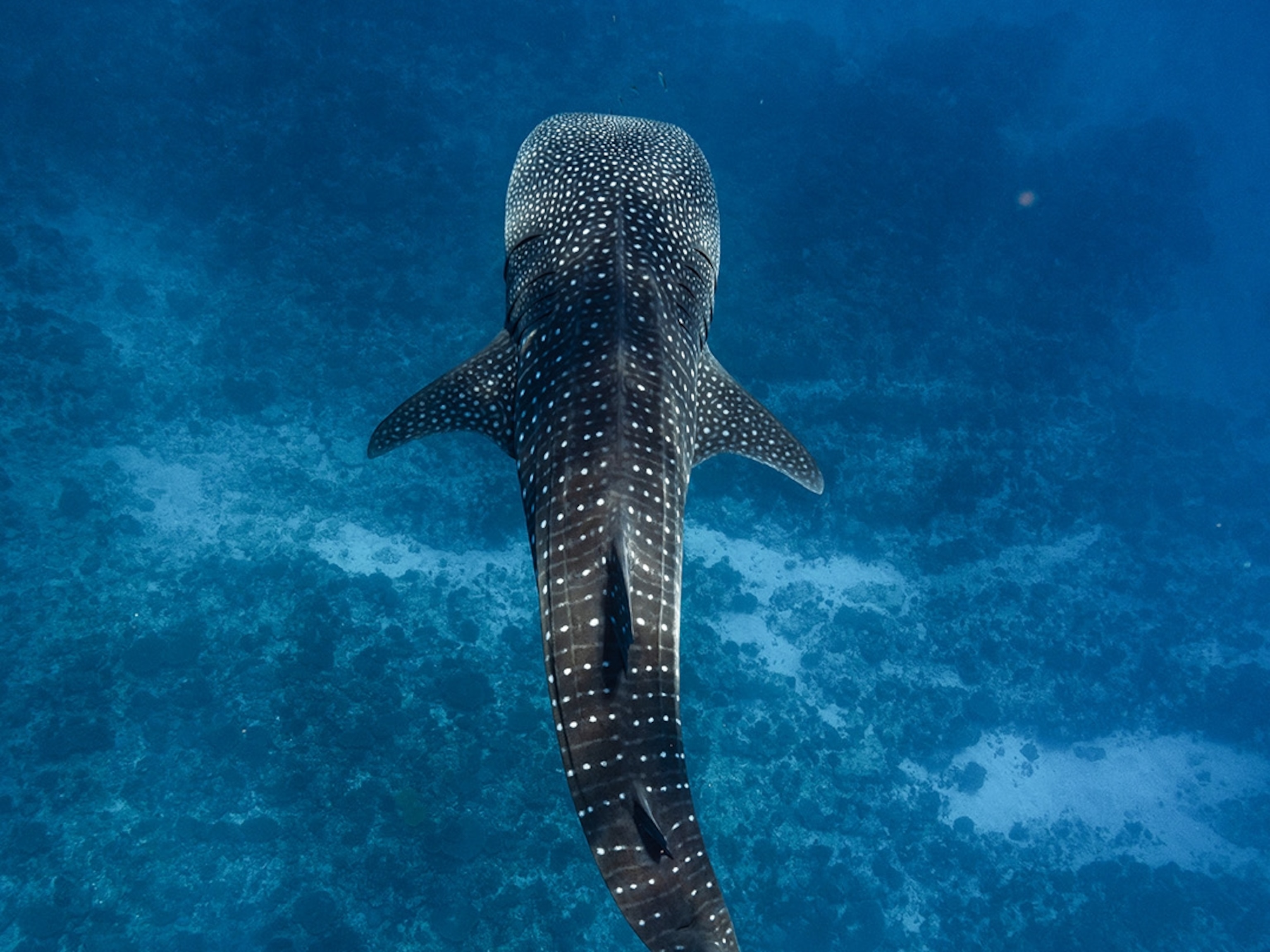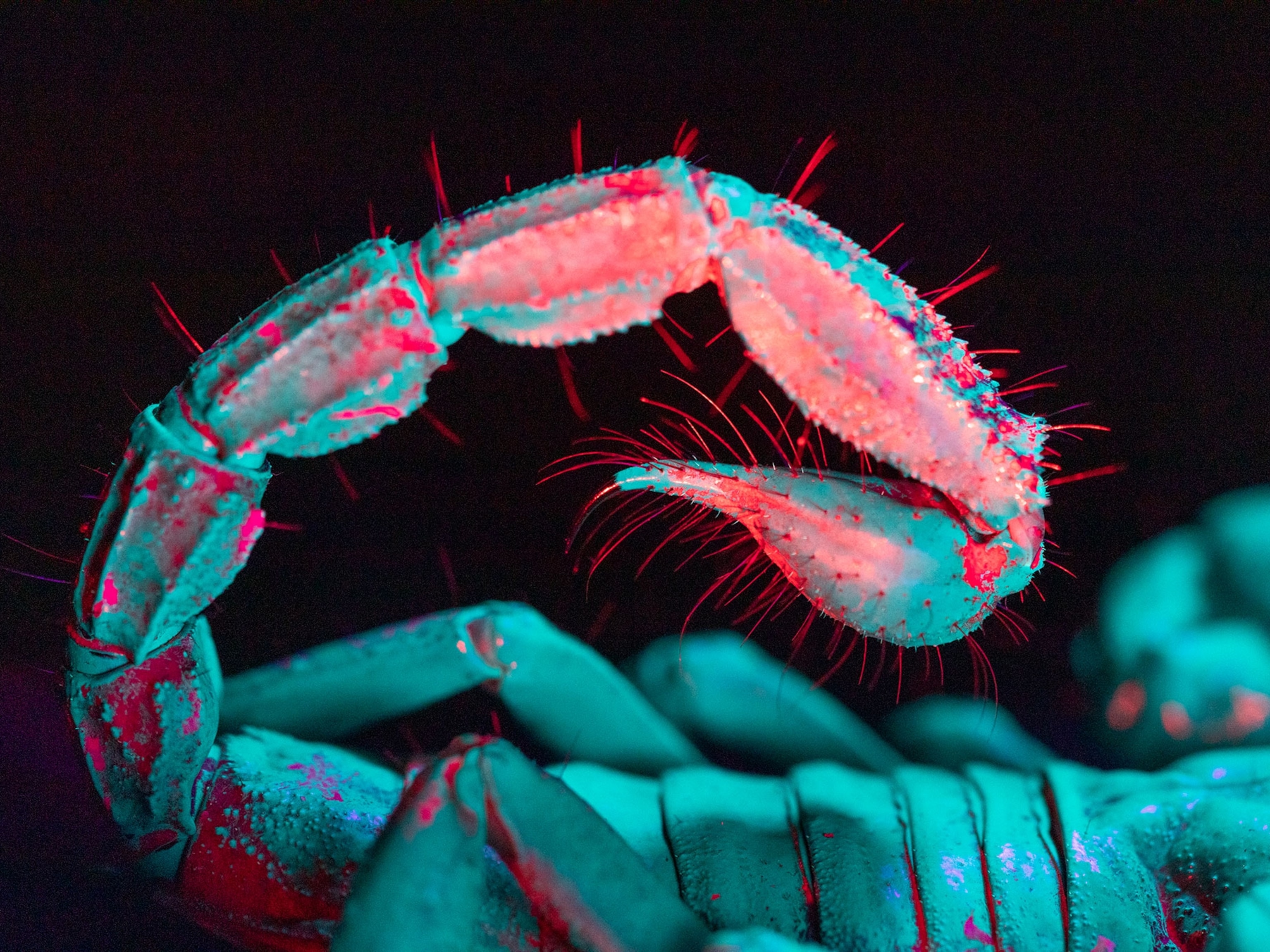Exclusive Video: First "Glowing" Sea Turtle Found
Scientists diving recently near the Solomon Islands made an illuminating discovery: The first biofluorescent reptile ever recorded.
Yes, this sea turtle is glowing neon green and red. No, it's not radioactive.
The critically endangered hawksbill sea turtle is the first reptile scientists have seen exhibiting biofluorescence—the ability to reflect the blue light hitting a surface and re-emit it as a different color. The most common colors are green, red, and orange.
Biofluorescence is different from bioluminescence, in which animals either produce their own light through a series of chemical reactions, or host bacteria that give off light.
Corals fluoresce, and recent research has found the ability in a number of fish, sharks, rays, tiny crustaceans called copepods, and mantis shrimp. But researchers never expected to find it in a marine reptile. (See pictures of other animals that glow.)
"I've been [studying turtles] for a long time and I don't think anyone's ever seen this," says Alexander Gaos, director of the Eastern Pacific Hawksbill Initiative, who was not involved in the find. "This is really quite amazing."
On Guard
Marine biologist David Gruber, of City University of New York, was in the Solomon Islands in late July to film biofluorescence in small sharks and coral reefs.
During one night dive, his team was on guard for crocodiles that frequent the area, "and there came out of nowhere this fluorescent turtle," says Gruber.
It looked like a big spaceship gliding into view, he recalls: An alien craft with a patchwork of neon green and red all over its head and body.
The marine biologist captured the turtle sighting on a video camera system, whose only artificial illumination was a blue light that matched the blue light of the surrounding ocean. A yellow filter on the camera allowed the scientists to pick up fluorescing organisms.
Gruber followed the turtle for a short while, but "after a few moments I let it go because I didn't want to harass it." The hawksbill proceeded to dive down into the pitch-black ocean.
Those stolen moments were the only ones Gruber could capture on his trip. But when he spoke with locals, the marine biologist discovered a nearby community that kept several captive young hawksbills.
When Gruber examined these animals for a biofluorescent ability, he found that they all glowed red.
A Neon Universe Expands
Gaos and Gruber think it's too early to say for sure why these hawksbill sea turtles have the ability to fluoresce, or whether populations in other places do as well.
"[Biofluorescence is] usually used for finding and attracting prey or defense or some kind of communication," says Gaos. In this instance, it could be a kind of camouflage for the sea turtle. (See pictures of insects that are masters of camouflage.)
The hawksbill's shell is very good at concealing the animal in a rocky reef habitat during the day, Gaos explains. "When we go out to catch them, sometimes they're really hard to spot."
The same could be true for a habitat rife with biofluorescing animals—like a coral reef.
In fact, Gruber pointed out that some of the red on the hawksbill he saw could have been because of algae on the shell that was fluorescing. The green is definitely from the turtle though, he says.
This find has opened up a whole universe of questions that Gruber is eager to explore. They include whether these turtles can see the biofluorescence, where they get the ability—do they take in compounds from their food that let them fluoresce, or do they make their own compounds—how they're using it, and whether other sea turtle species possess a similar ability.
"It'd be fairly difficult to study this turtle because there are so few left and they're so protected," says Gruber. Worldwide, their population numbers have declined by nearly 90 percent in recent decades.
But he thinks he might be able to study the slightly more common—although still endangered—green sea turtle, which is closely related to the hawksbill. (See pictures of millions of sea turtles that might have been killed accidentally.)
Hawksbill sea turtles are one of the rarest species on our planet, Gruber says, yet for all their conservation importance, the animals remain a mystery.
Follow Jane J. Lee on Twitter.













